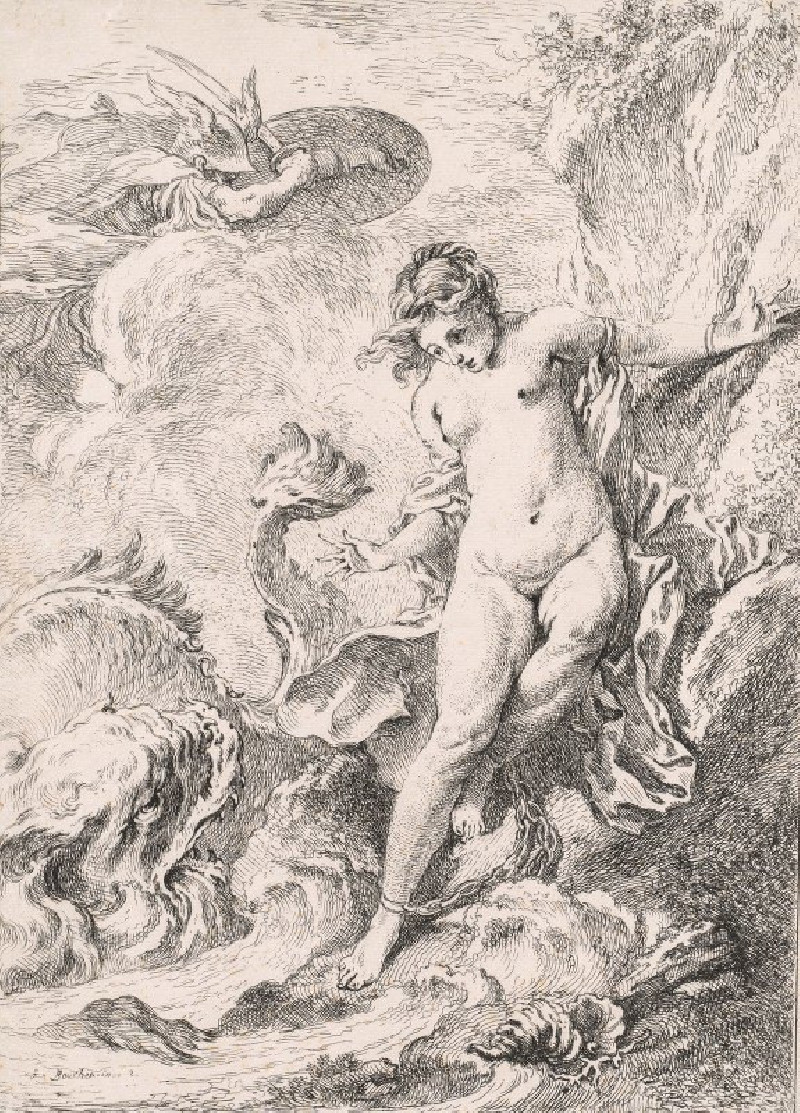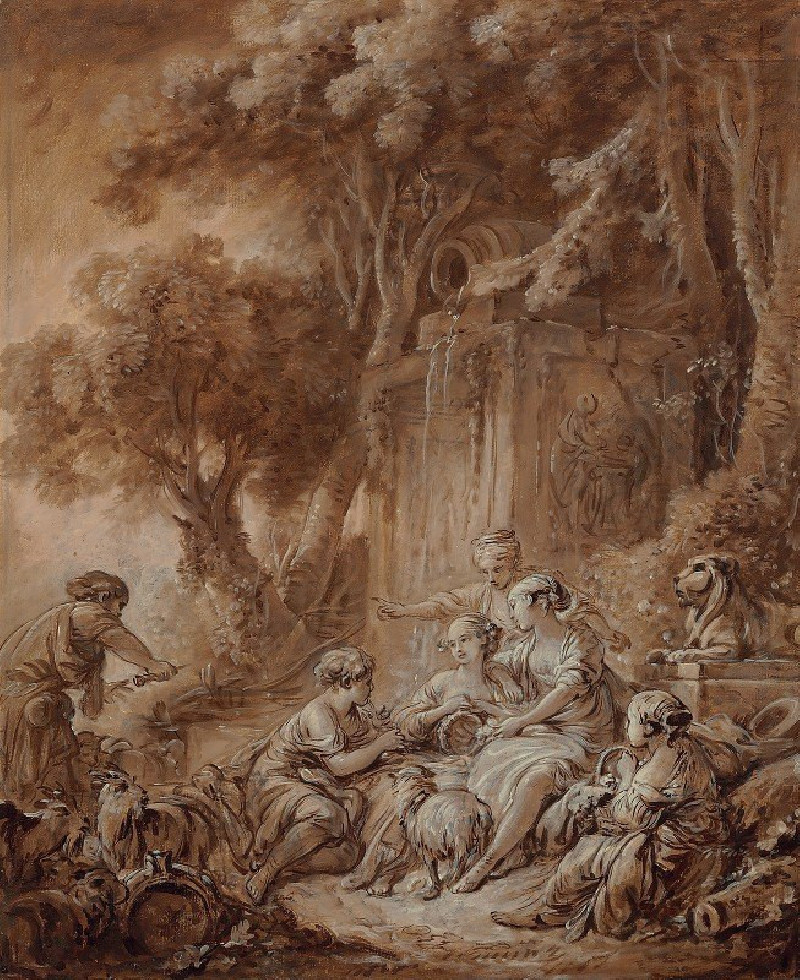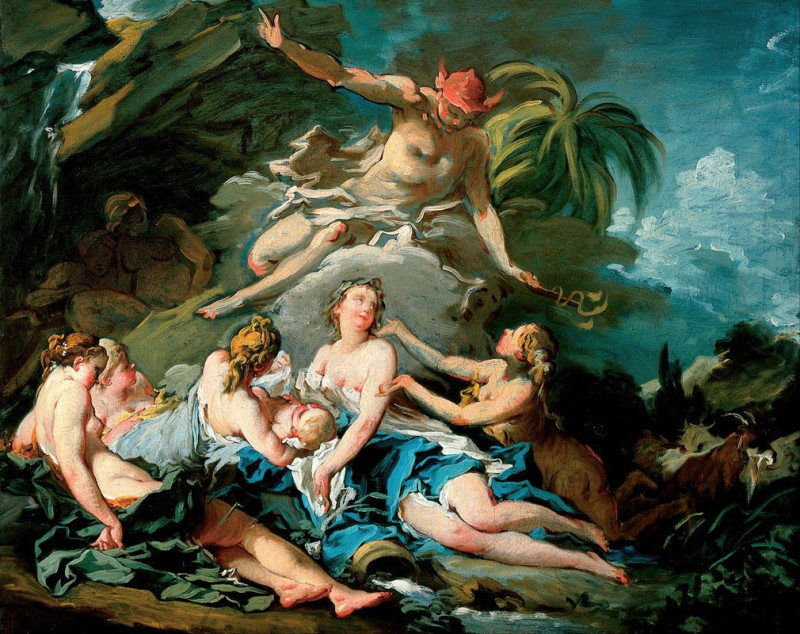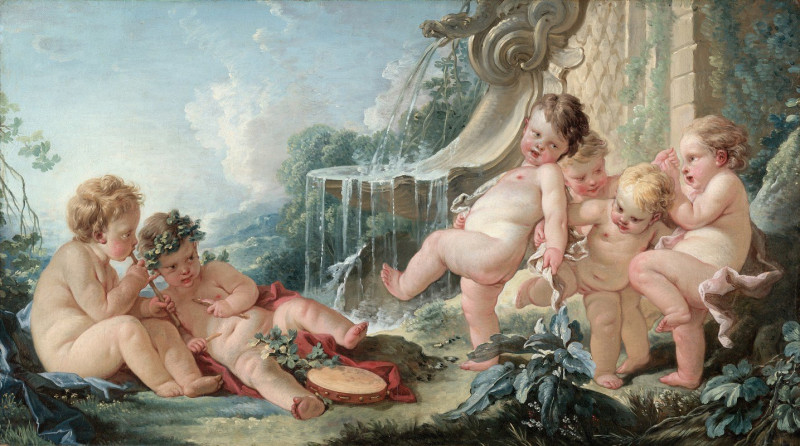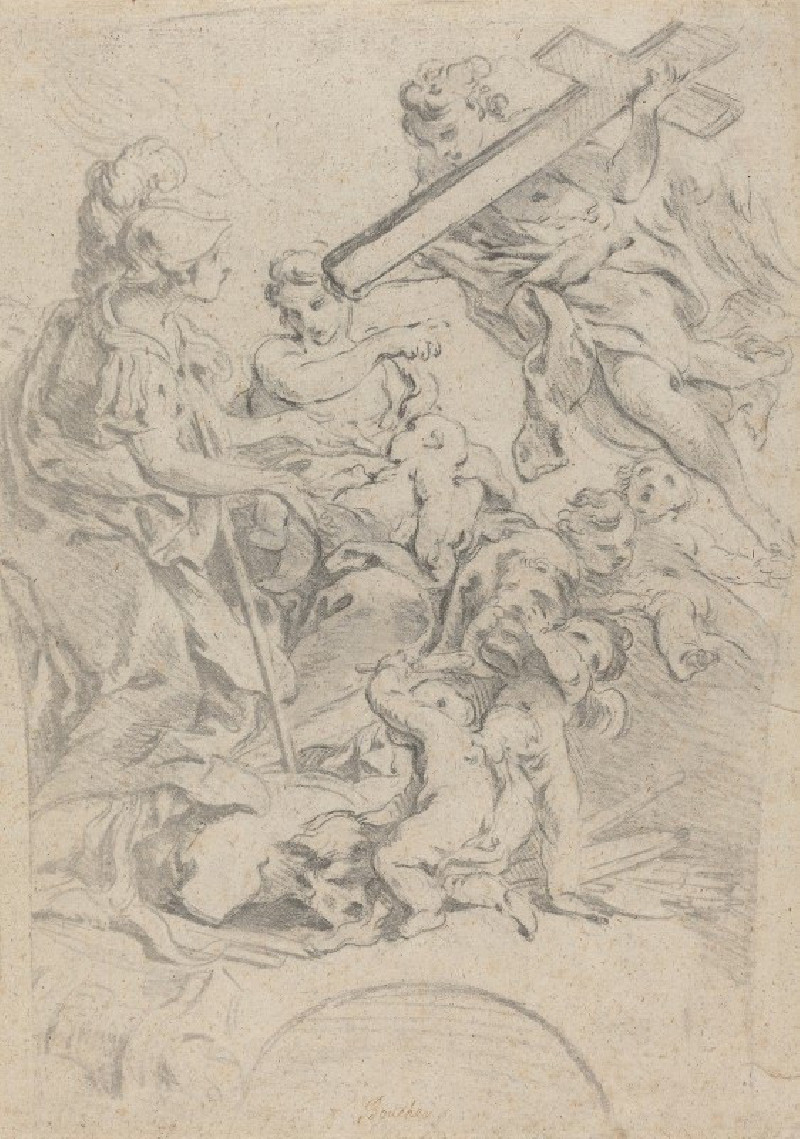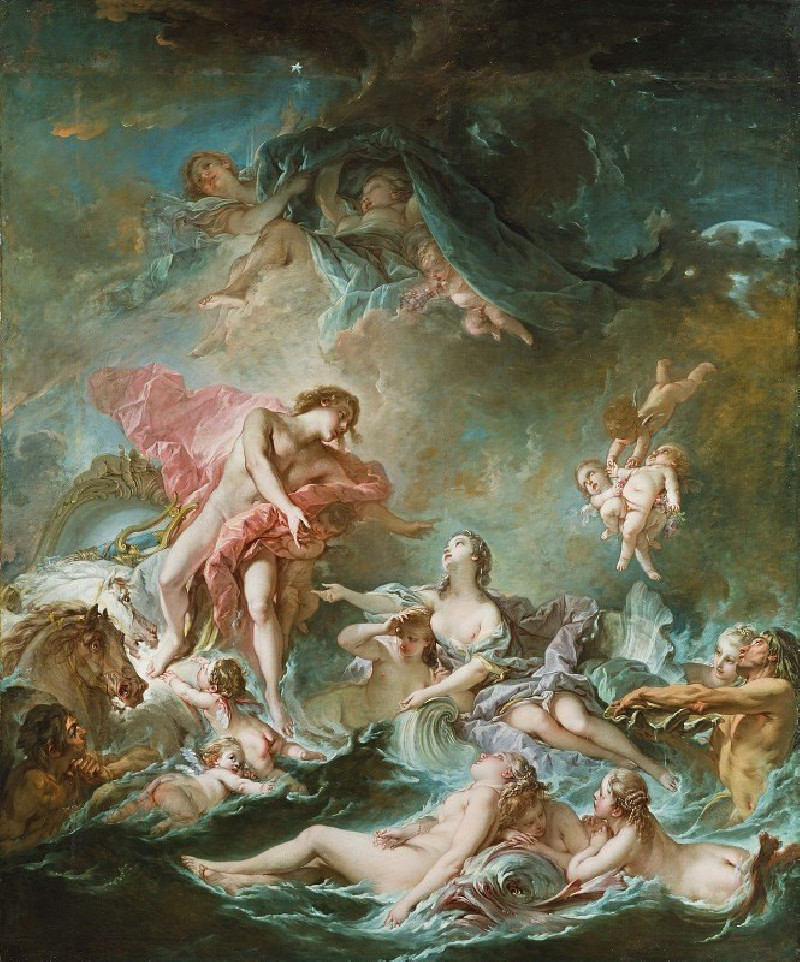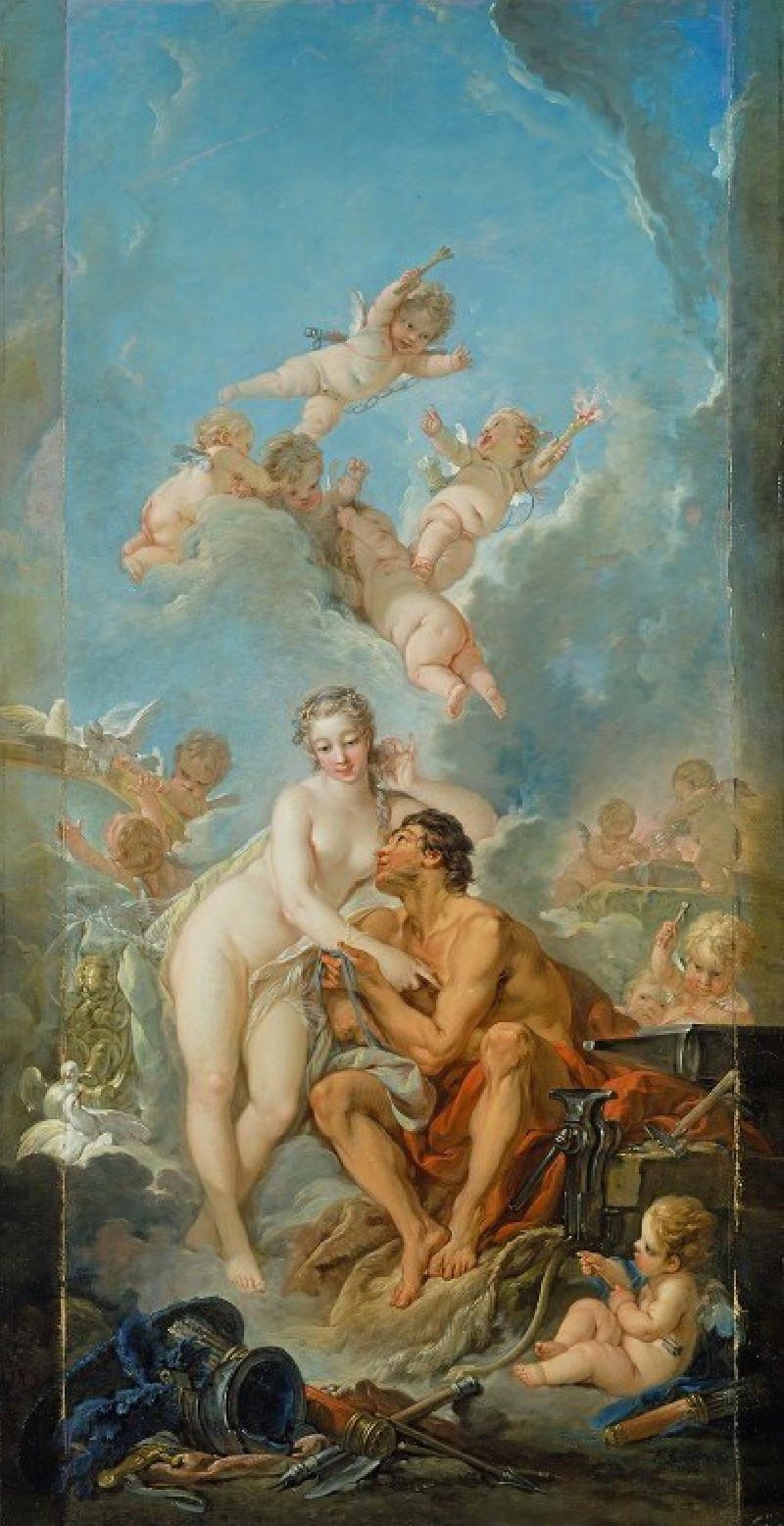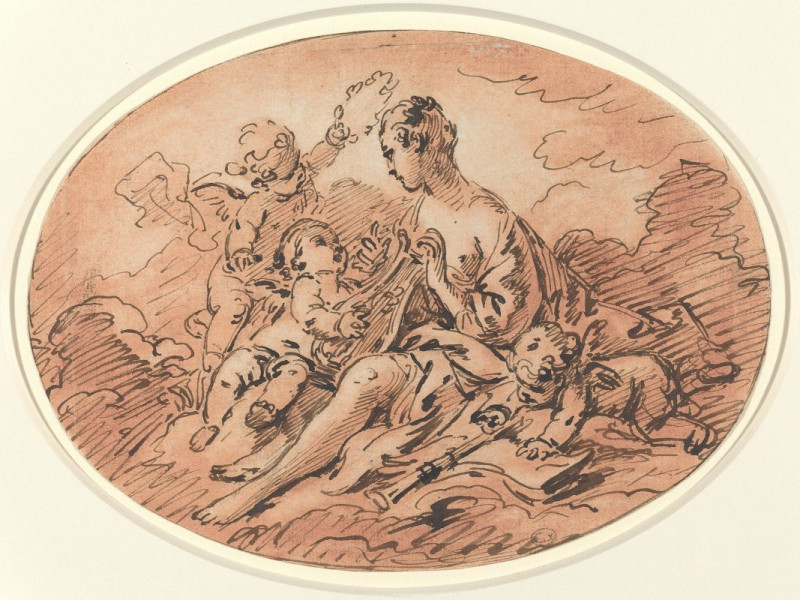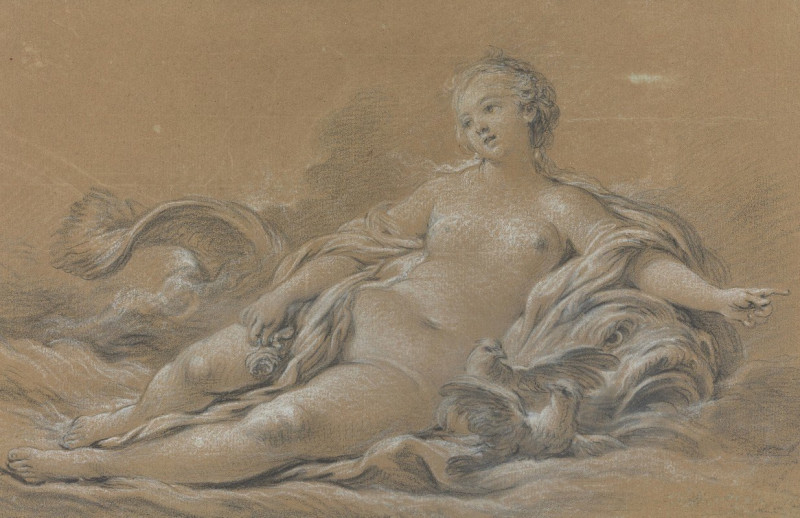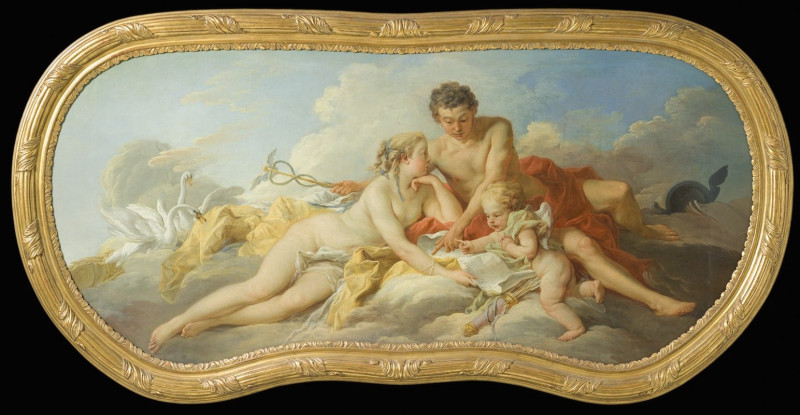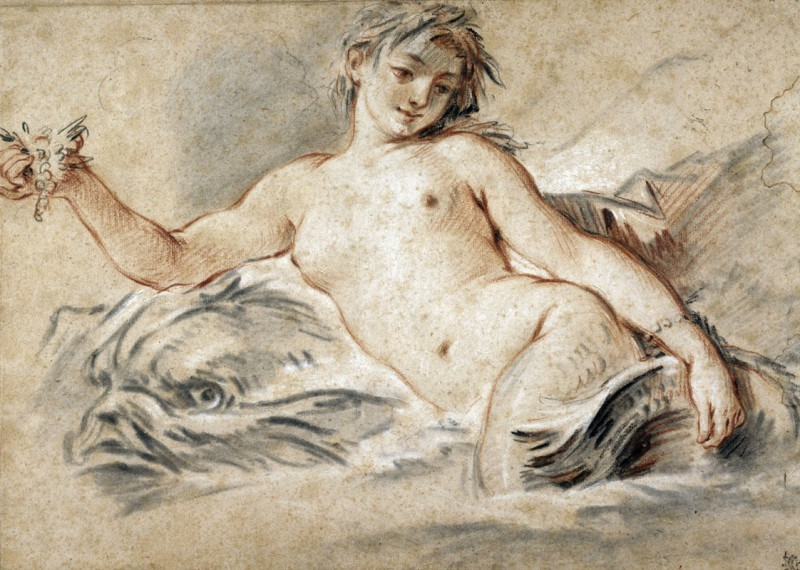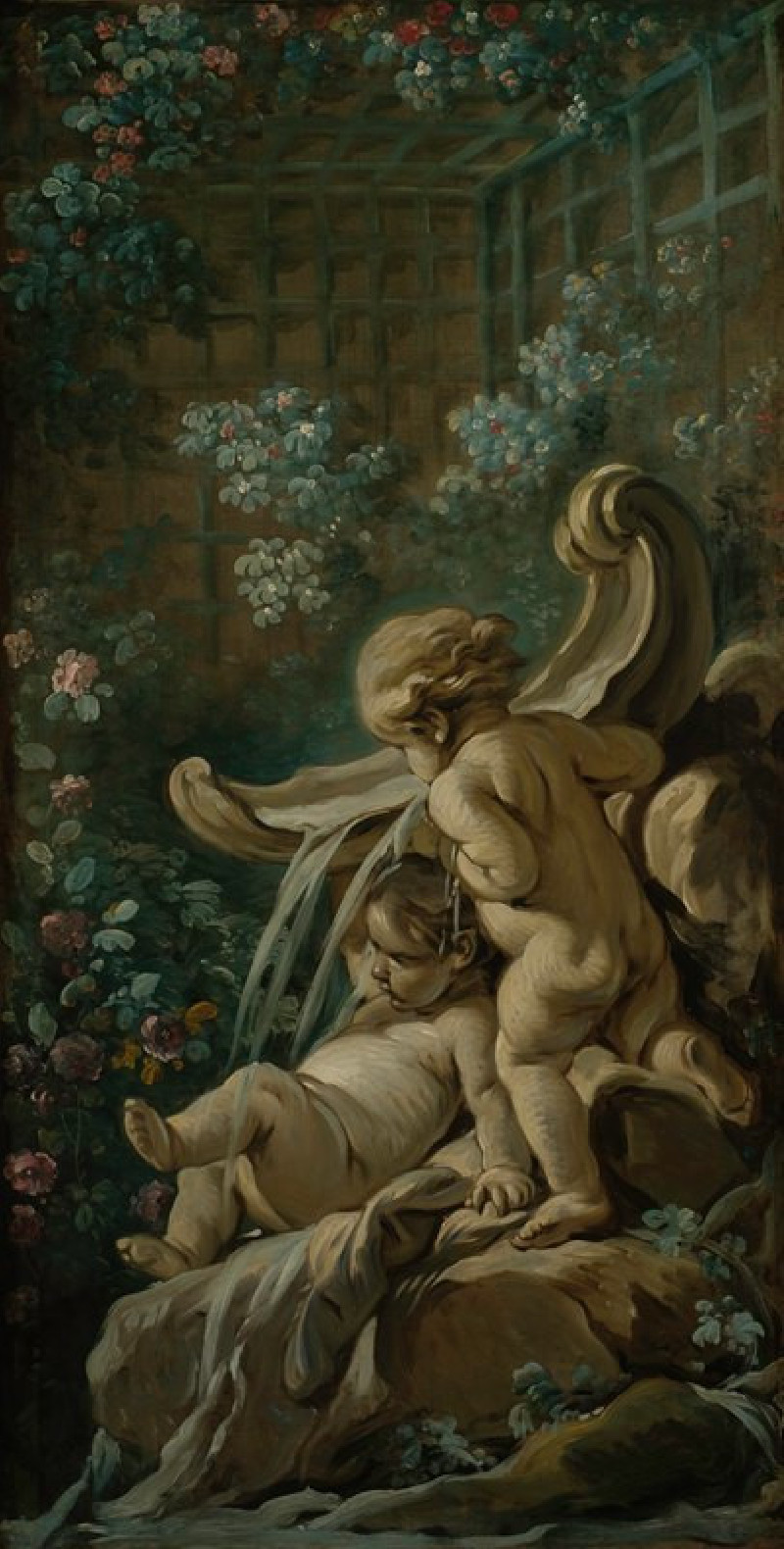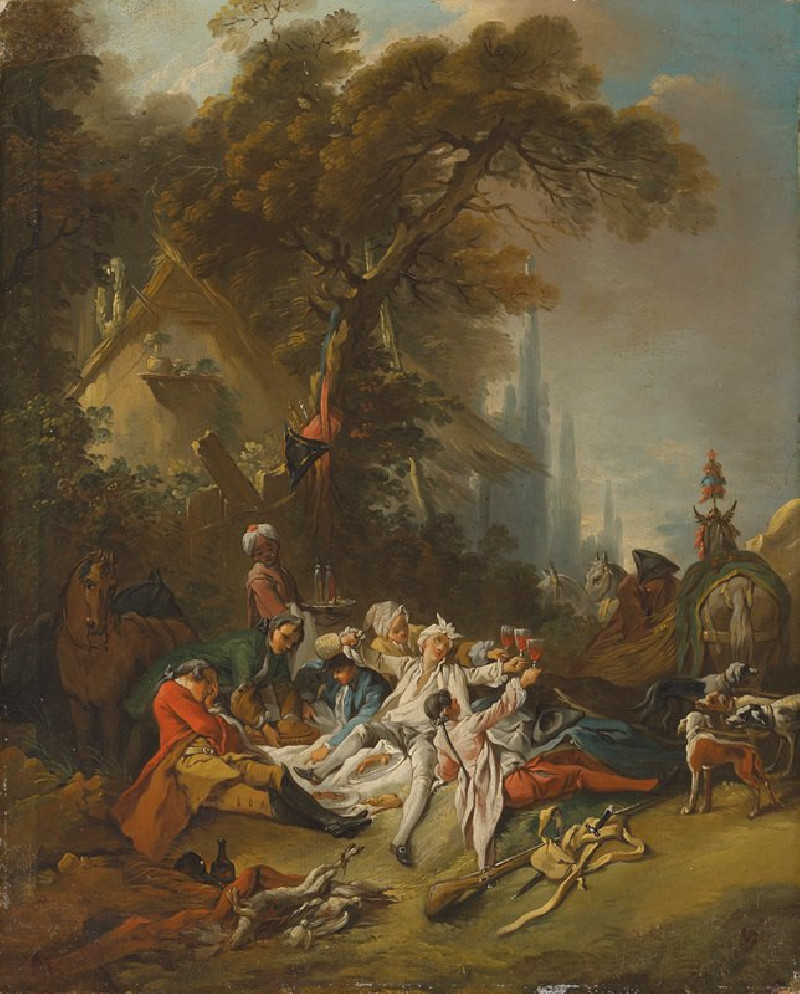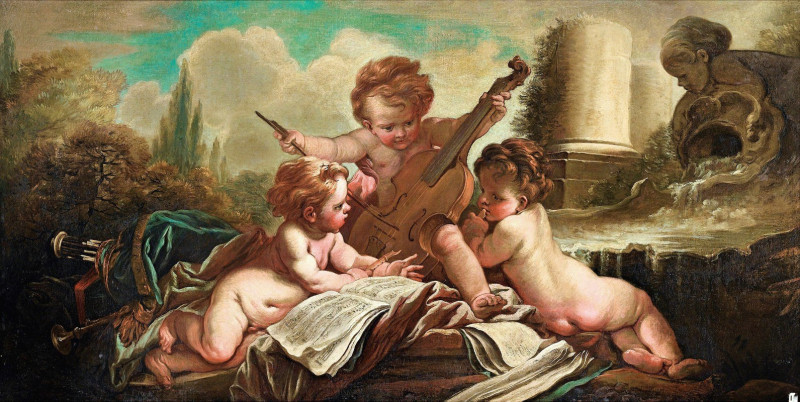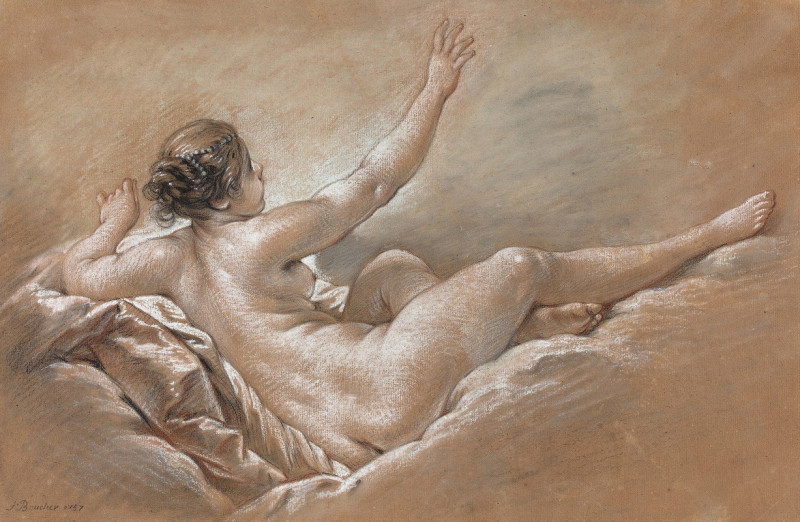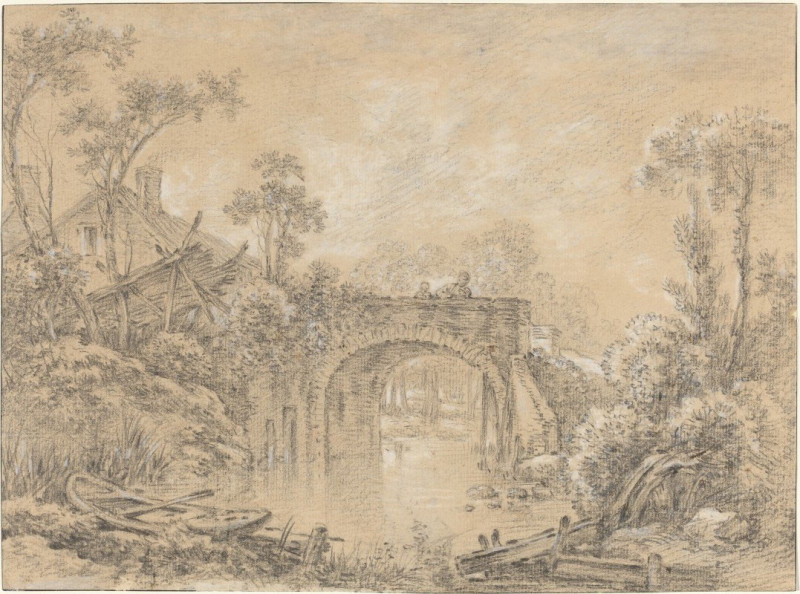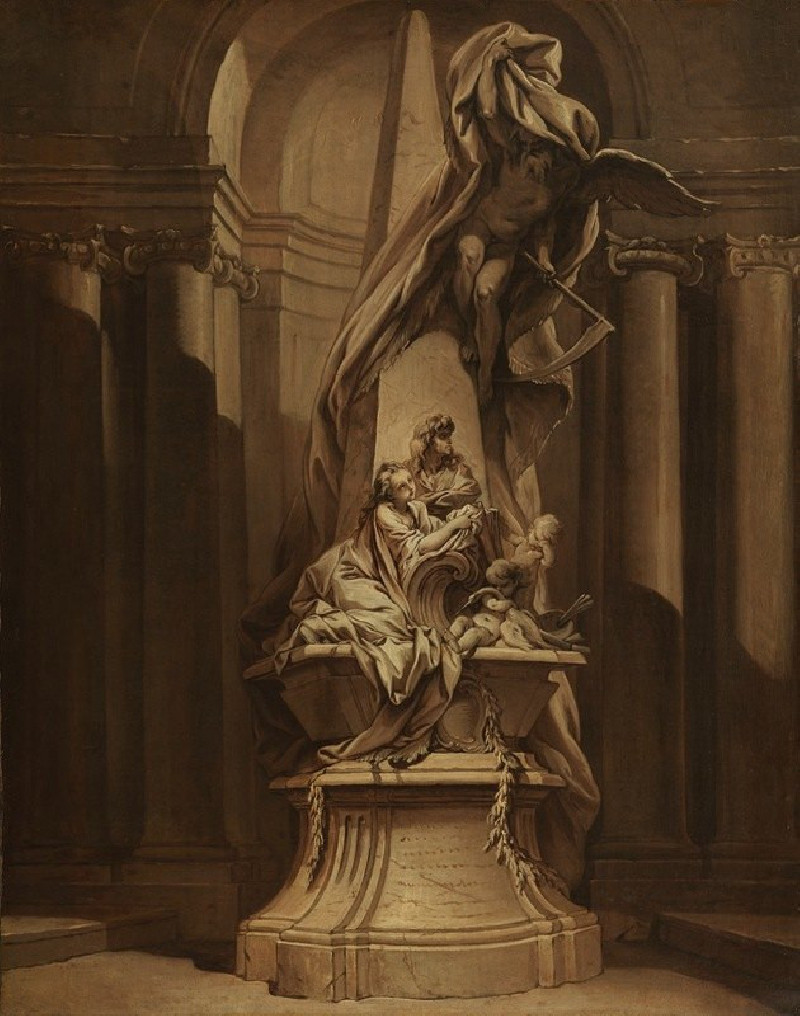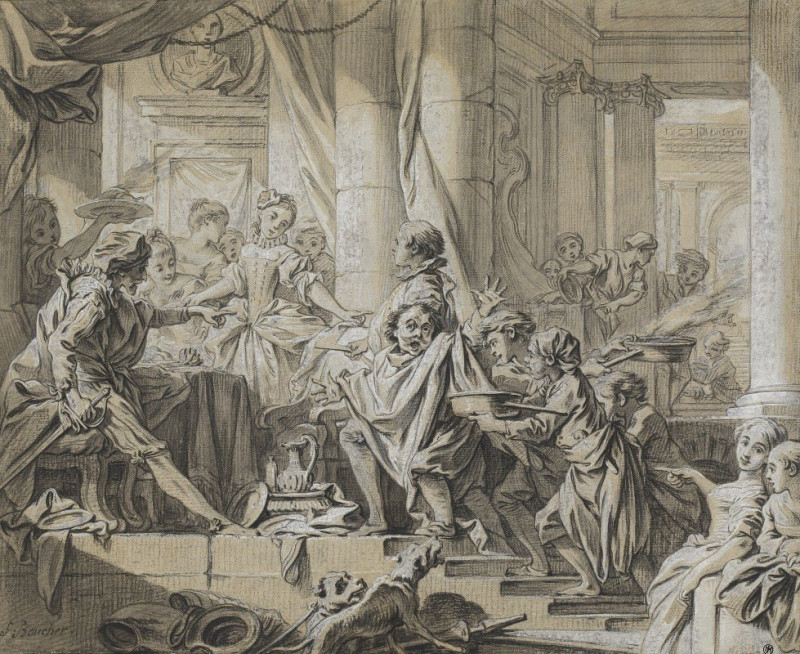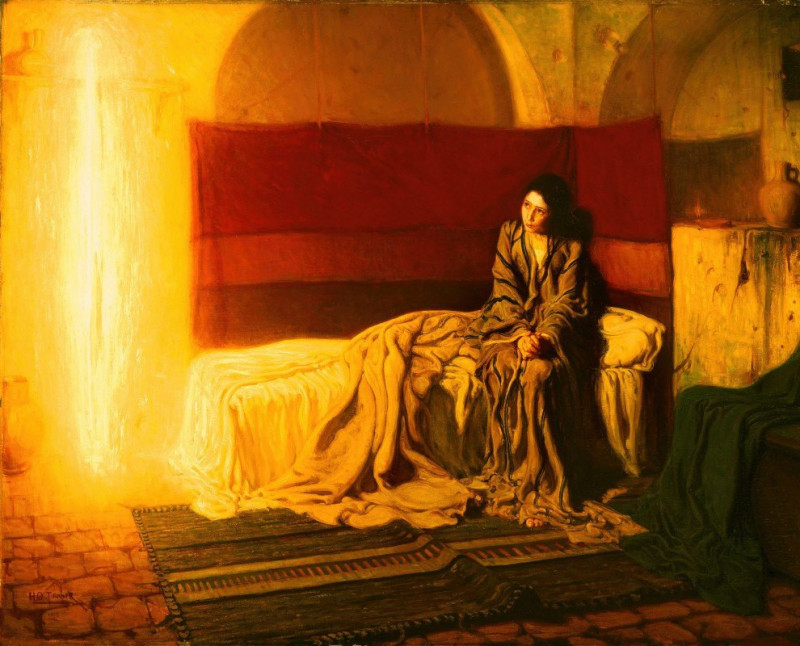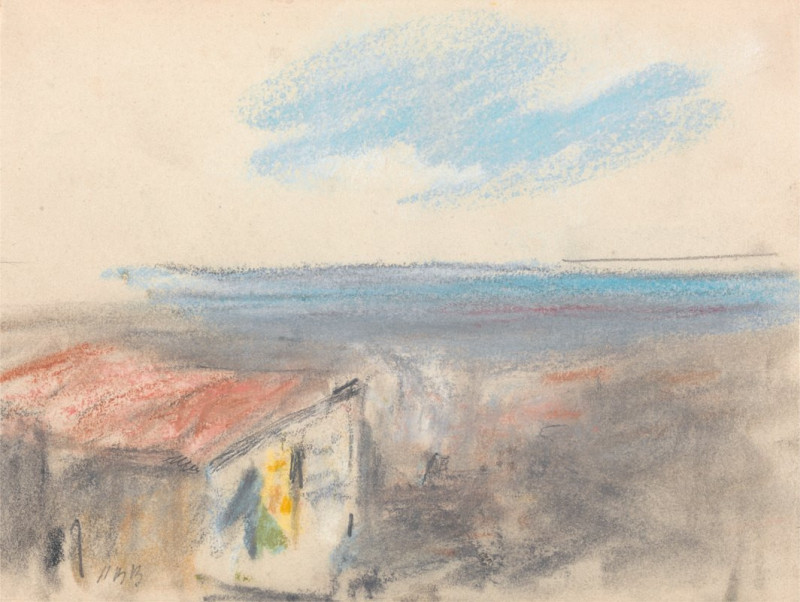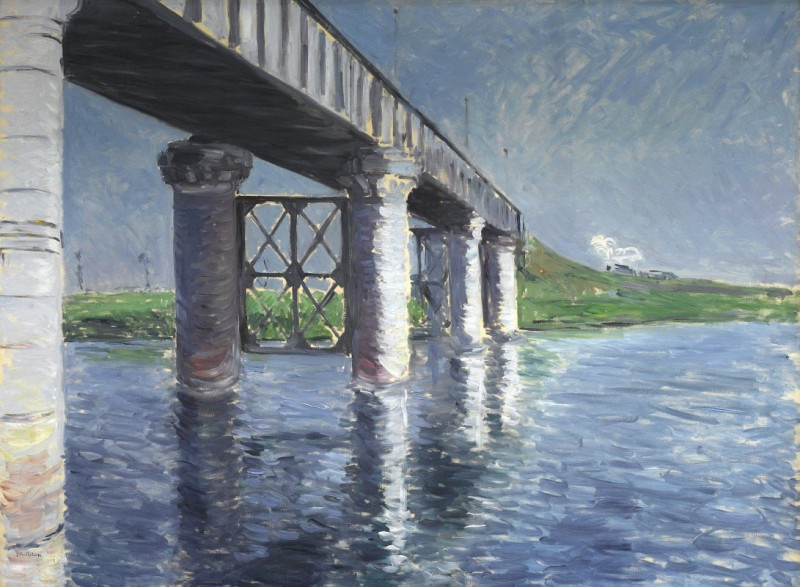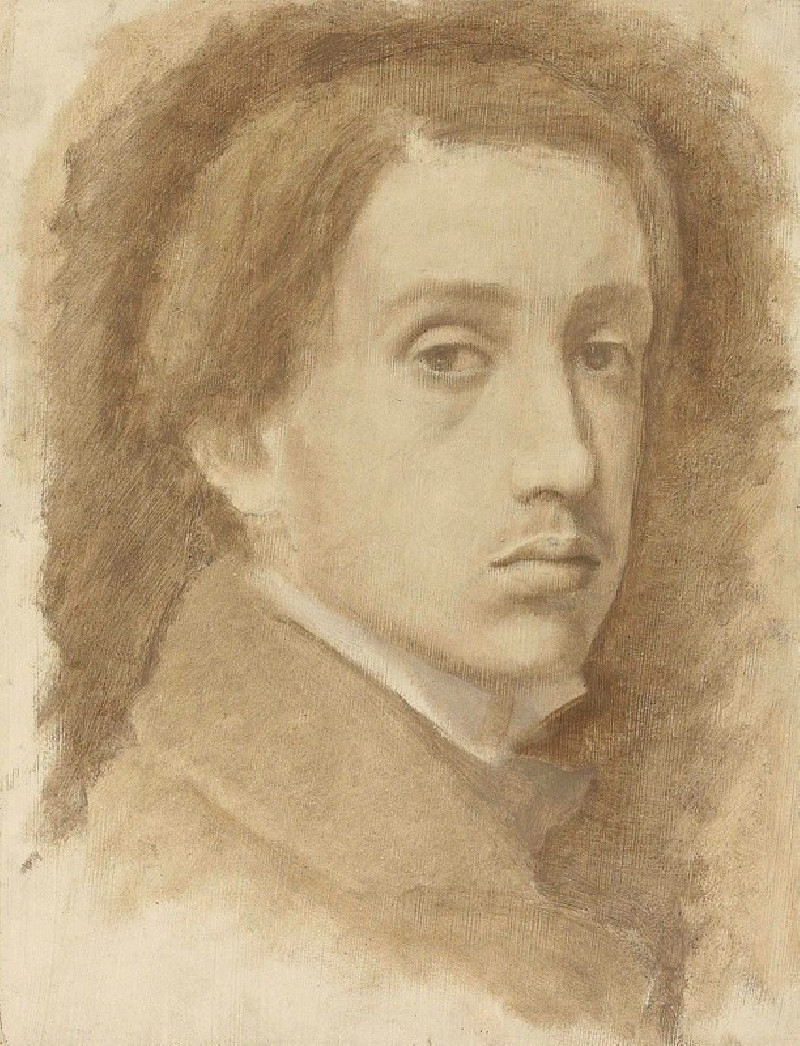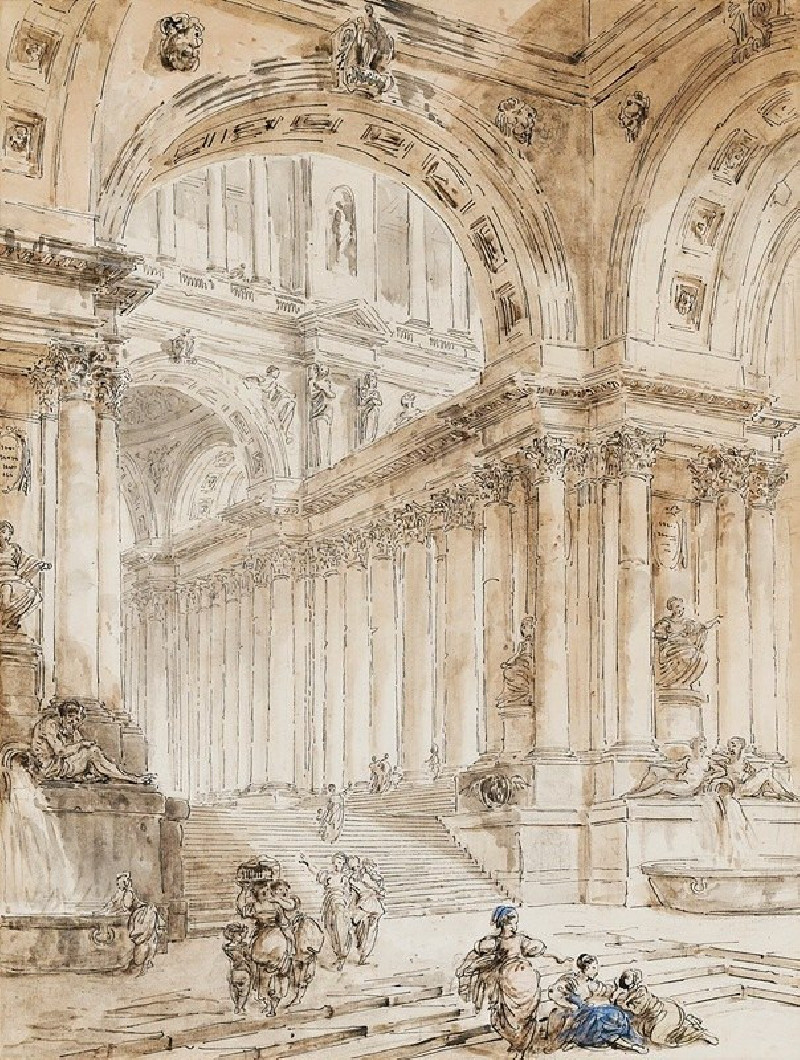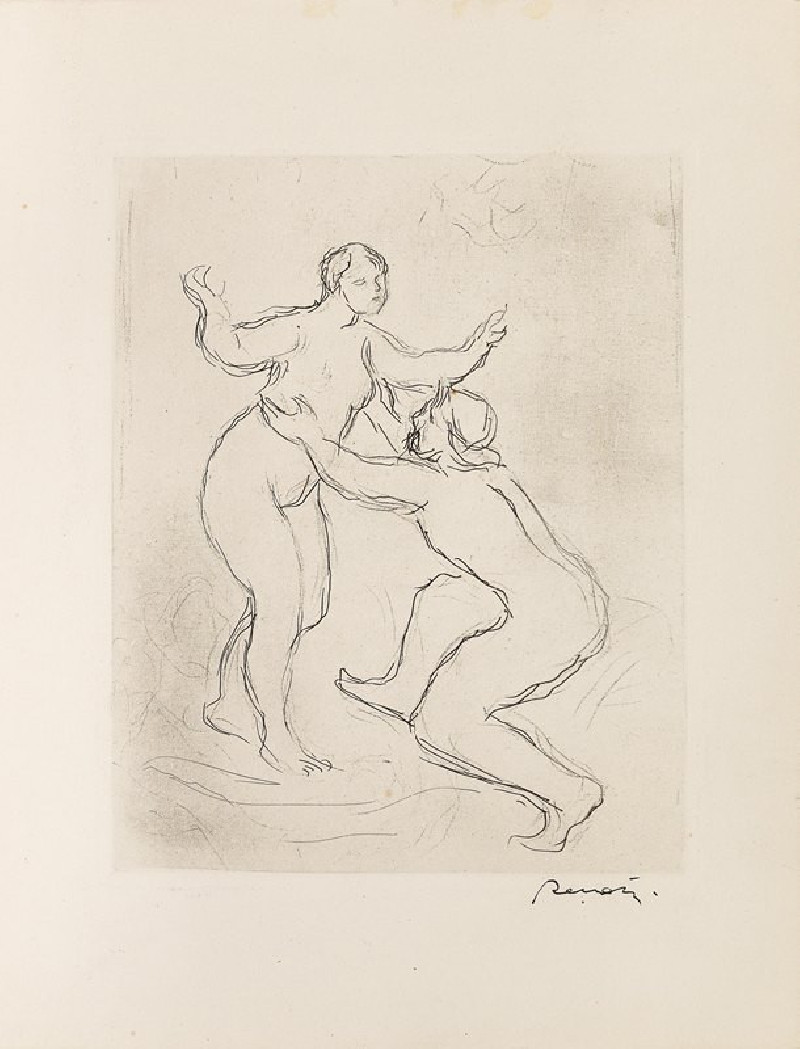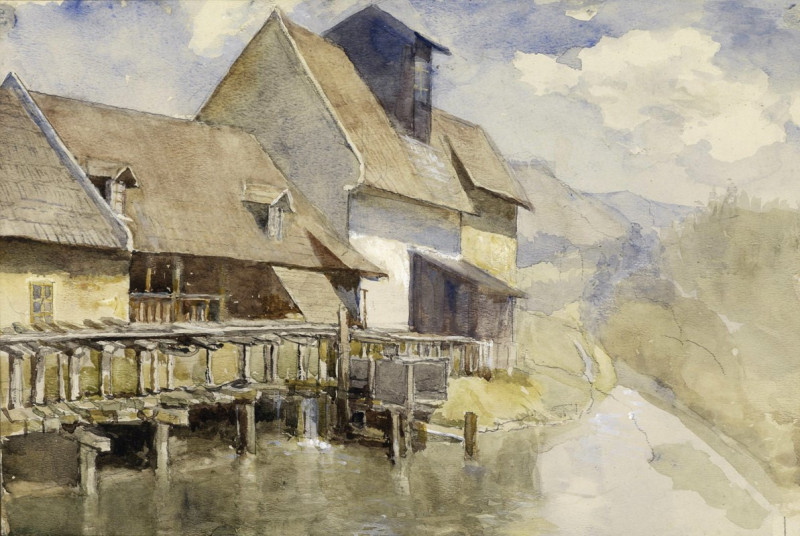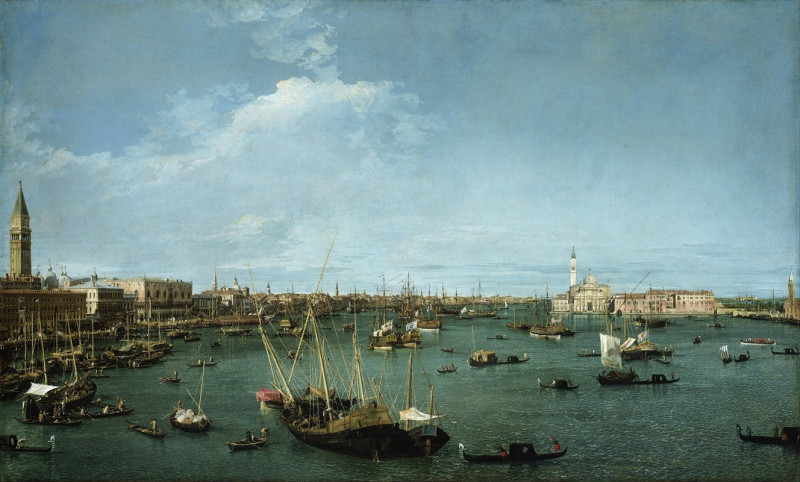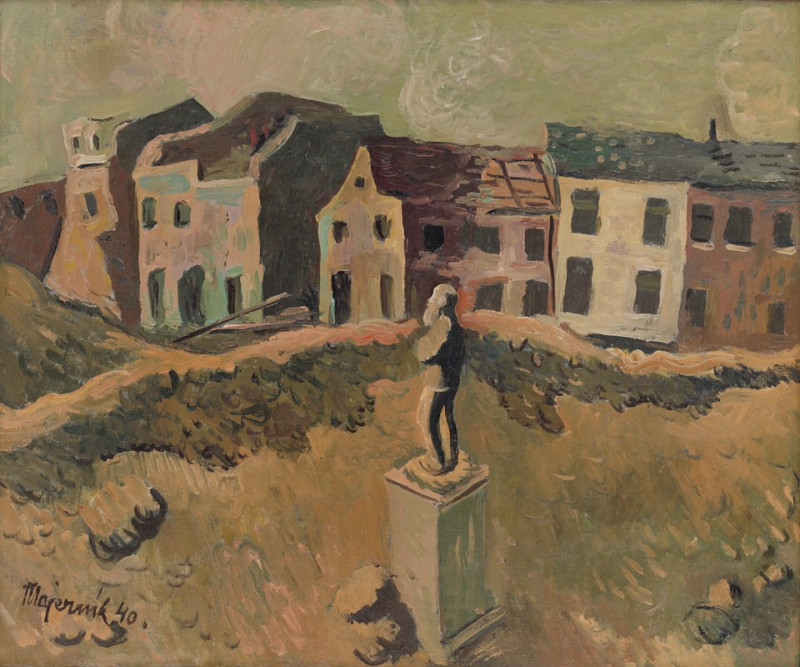Andromeda (Andromède) (1734)
Technique: Giclée quality print
Recommended by our customers
More about this artwork
Francois Boucher, a preeminent figure in French Rococo art, brings us a captivating depiction of the mythological tale of Andromeda in this striking 1734 artwork entitled "Andromeda" (Andromède). This etching is a testament to Boucher's mastery in capturing emotion and dramatic intensity, blended with the delicate intricacies of Rococo style.The scene vividly illustrates the moment just before Andromeda's rescue. Andromeda stands exposed and vulnerable, a figure of both grace and distress, chained to a rocky outcrop by the stormy sea. Her delicate form contrasts starkly with the tumultuous waves and the fierce sea monster that threatens her life. The beast, emerging furiously from the water, adds a dynamic sense of imminent peril to the composition.Boucher’s skillful use of light and shadow enhances the physical and emotional intensity of the scene. The viewer's attention is drawn to Andromeda’s expression of helpless anticipation, awaiting her fate. Despite her precarious situation, there is a hint of hope that threads through the artwork, perhaps foretelling her impending rescue.This piece not only embodies the Rococo love for ornate and sensual portrayals but also serves as a narrative arch that speaks to themes of danger, beauty, and heroism. Displayed prominently on our website, this engraving invites art lovers to delve into the historical and mythological contexts of Boucher's time, offering a glimpse into the artistic exploration of human emotion and mythic storytelling.
Delivery
Returns
François Boucher (1703–1770) was a French painter, engraver, illustrator and printmaker. He was a proponent of Rococo and had a huge influence in spreading the style throughout Europe. His art was idyllic and voluptuous with a high-toned palette of blues and pinks. He created designs for all decorative arts, porcelains and tapestries. Boucher also painted several portraits including his patroness Madame de Pompadour. He is one of the most celebrated decorative artists of the 18th century.

